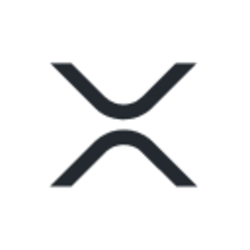- The Ripple community eagerly awaits the full integration of Ethereum Virtual Machine (EVM) compatibility into the XRP Ledger (XRPL).
- The XRPL EVM sidechain is making strides, aiming to provide new opportunities for developers in decentralized finance and real-world asset tokenization.
- Monica Long, Ripple’s president, has shared updates on Q2 progress, including developments with Axelar for operability and upcoming enhancements for future quarters.
Discover the latest advancements in Ripple’s journey to integrate EVM compatibility with the XRP Ledger, and explore key developments and future impacts on the cryptocurrency market.
Significant Progress in XRPL EVM Sidechain Integration
The Ripple community is abuzz with anticipation as the integration of the Ethereum Virtual Machine (EVM) compatibility into the XRP Ledger (XRPL) picks up pace. According to Ripple president Monica Long, recent updates highlight notable advancements in this area. The introduction of the XRPL EVM sidechain is poised to offer numerous opportunities for developers engaged in decentralized finance and the tokenization of real-world assets. These efforts not only drive innovation but are also expected to broaden the XRP network significantly.
Strategic Partnerships and Their Role
A crucial element in XRPL’s recent developments is its partnership with Axelar, which will serve as the exclusive bridge for the sidechain’s native token from the XRPL. Axelar’s ability to connect over 50 different blockchains further enhances the interoperability of the XRPL EVM sidechain. This collaboration is expected to bring significant advantages to the XRP ecosystem, enabling seamless transactions across multiple platforms and diversifying its use cases.
Ripple’s Collaboration with Archax
Among the most exciting updates is the anticipated collaboration with Archax, a development that Ripple expects to bring substantial inflows of tokenized real-world assets (RWA) worth hundreds of millions of dollars onto the XRPL. This strategic move underscores Ripple’s commitment to bridging traditional finance and blockchain technology, offering a robust platform for asset tokenization and further securing XRP’s position in the market.
Future Technological Enhancements
Monica Long also hinted at forthcoming releases that promise to fortify XRPL’s capacity and functionality. These include the deployment of Oracles and Multi-Party Computation (MPT), which are slated for unveiling in the upcoming quarters. Such advancements are expected to enhance transaction security, data reliability, and overall network robustness, drawing more developers and institutional interests towards the XRP Ledger.
Impact of Regulatory Developments
The XRP Markets Report for the second quarter presents a mixed outlook. Despite market volatility, XRP has seen steady institutional adoption. The developments in regulatory frameworks like the Markets in Crypto-Assets Regulation (MiCA) have provided a more definitive direction for compliance and governance, aiding XRP’s resilience amid broader market disruptions.
Ongoing Legal Challenges
However, the lingering legal battle between Ripple and the U.S. Securities and Exchange Commission (SEC) continues to stir concerns within the community. Many believe that the resolution of this legal dispute could significantly boost XRP’s market performance. Until then, the ambiguity surrounding the lawsuit remains a key area of concern, potentially hindering the token’s growth and market penetration.
Conclusion
To sum up, Ripple’s ongoing efforts to integrate EVM compatibility into the XRP Ledger mark a significant stride towards enhancing its capabilities and expanding its ecosystem. Strategic partnerships with entities like Axelar and Archax, coupled with upcoming technological advancements, position XRP for future growth despite current regulatory hurdles. As these developments progress, the XRP community remains optimistic about the potential for innovation and adoption in the decentralized finance landscape.
